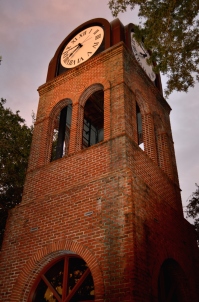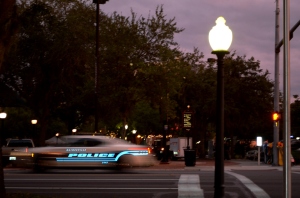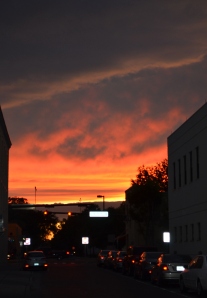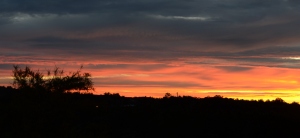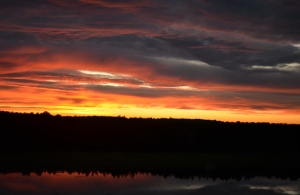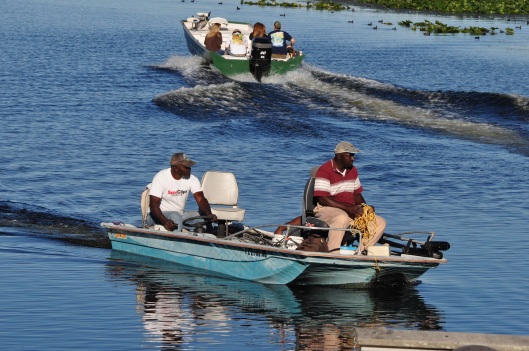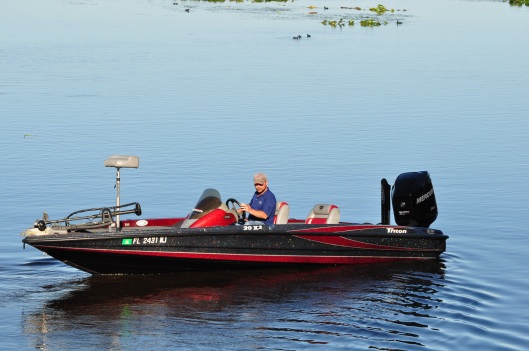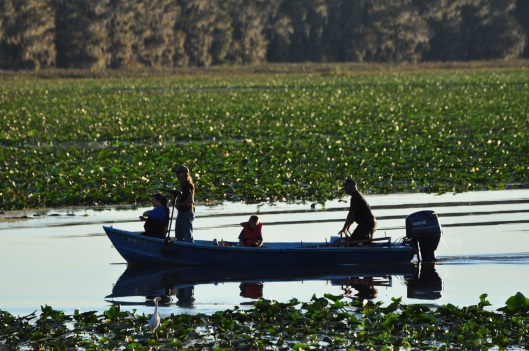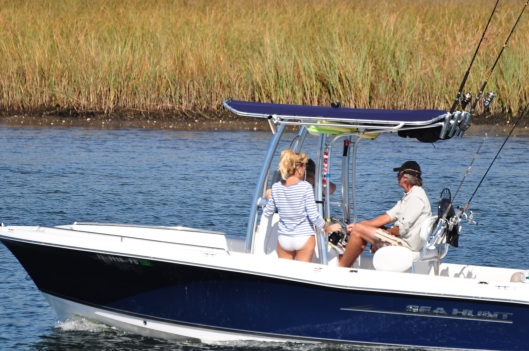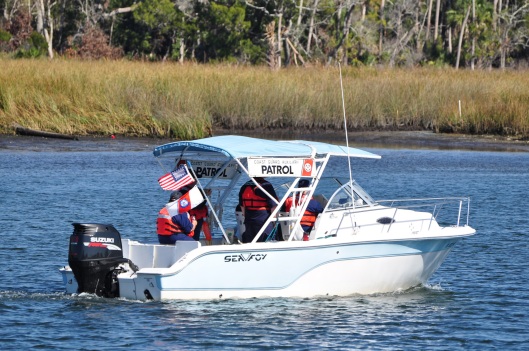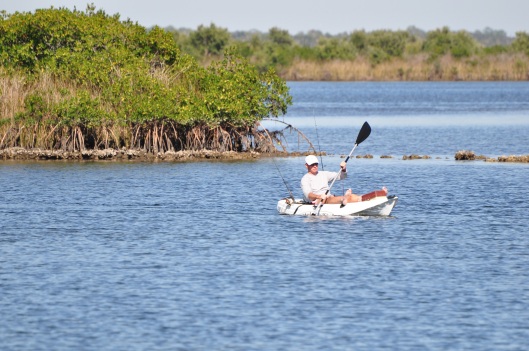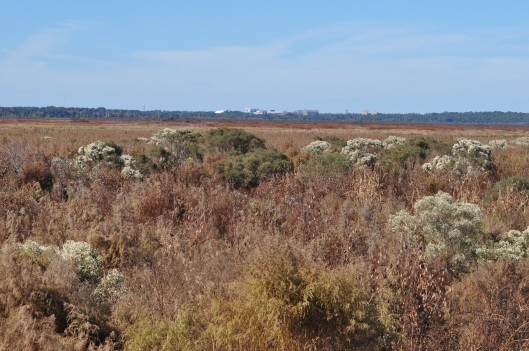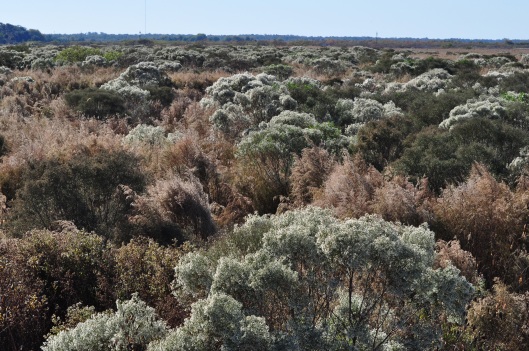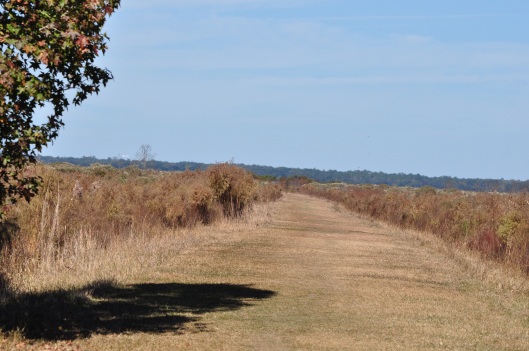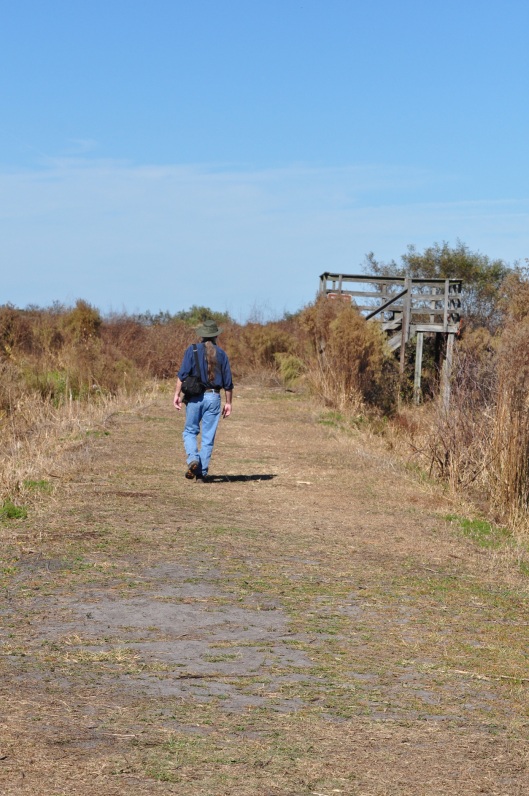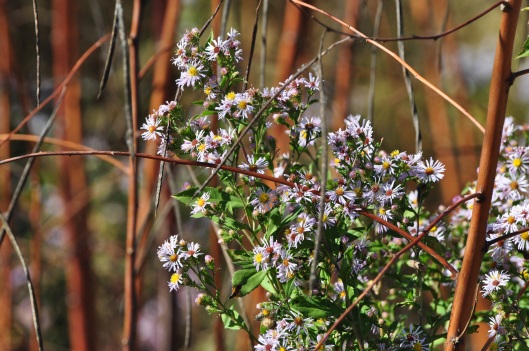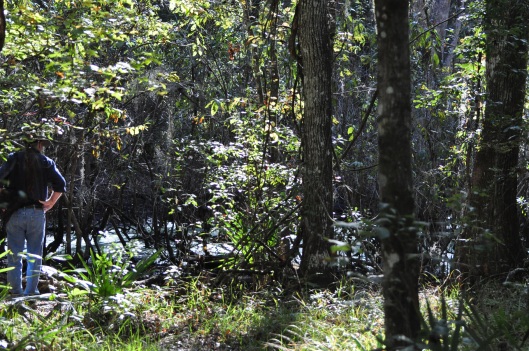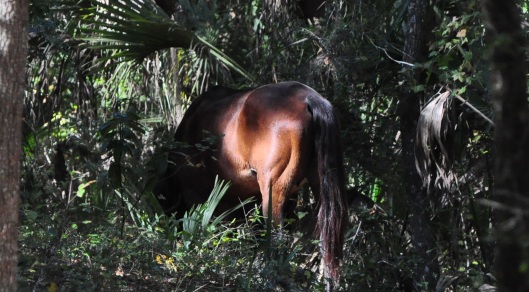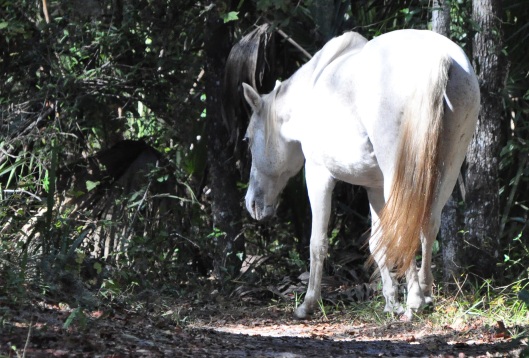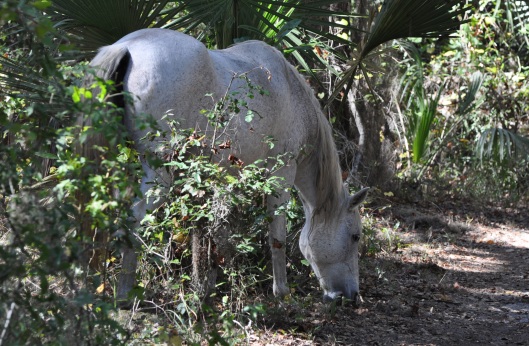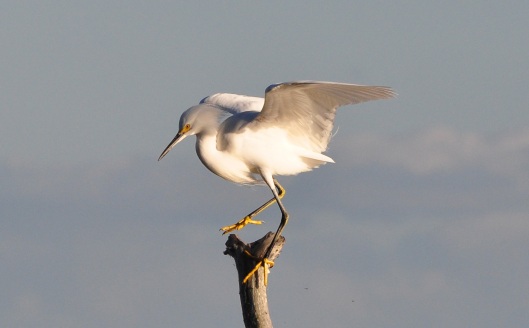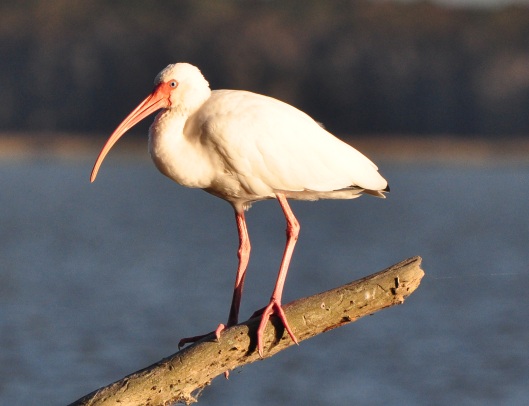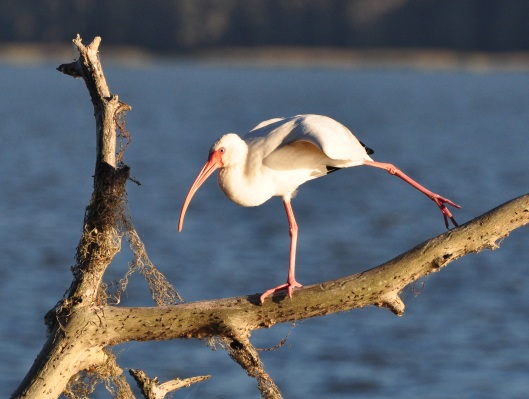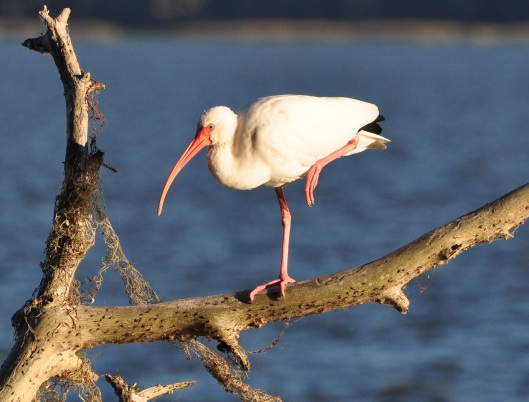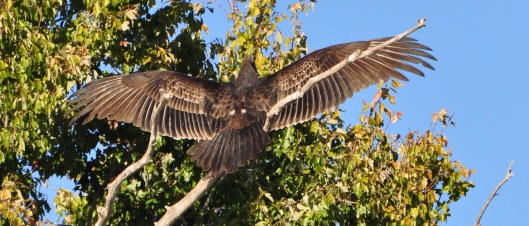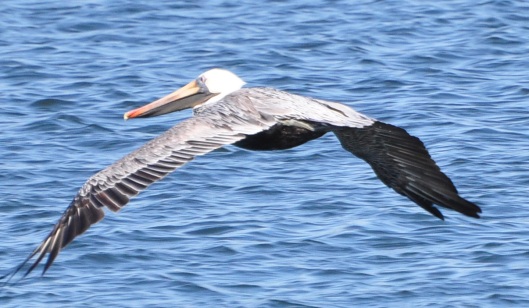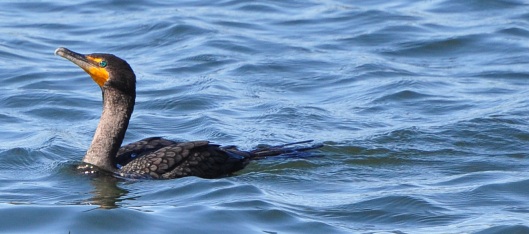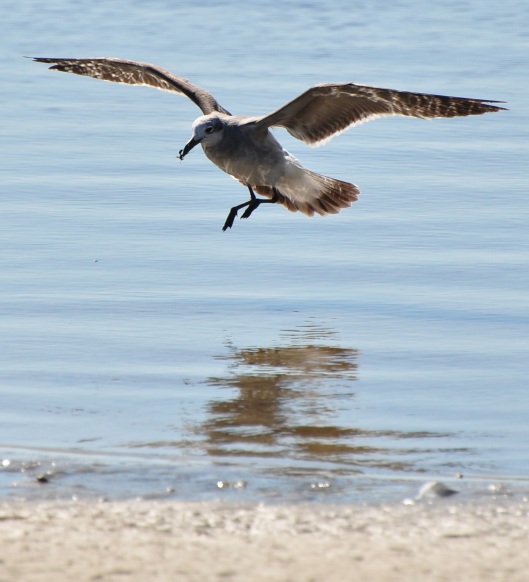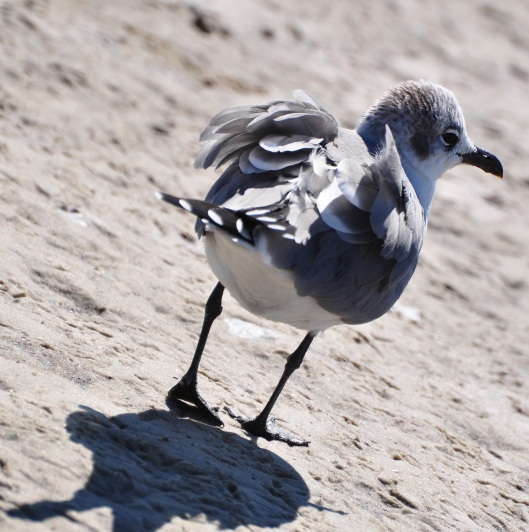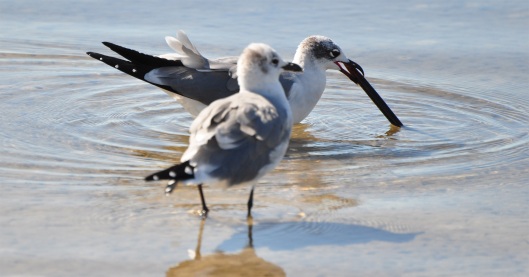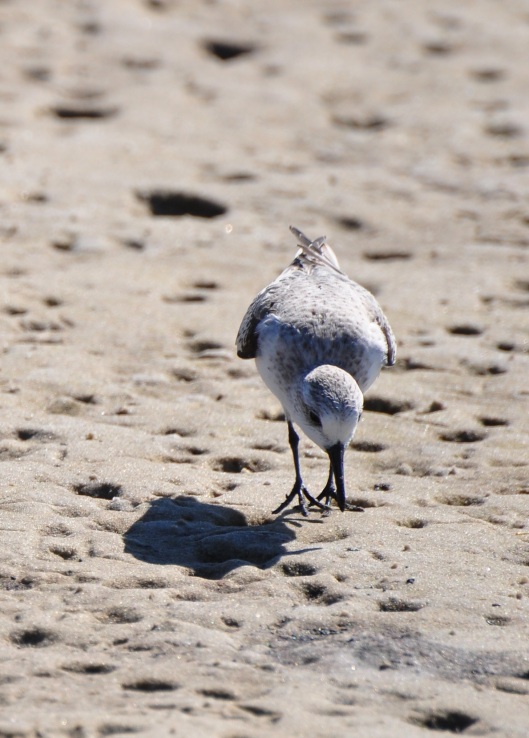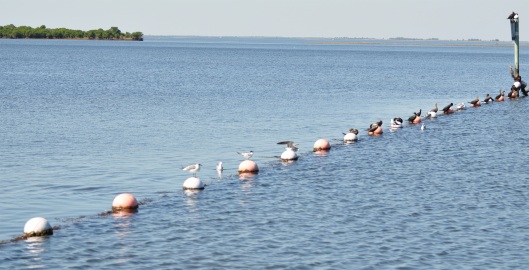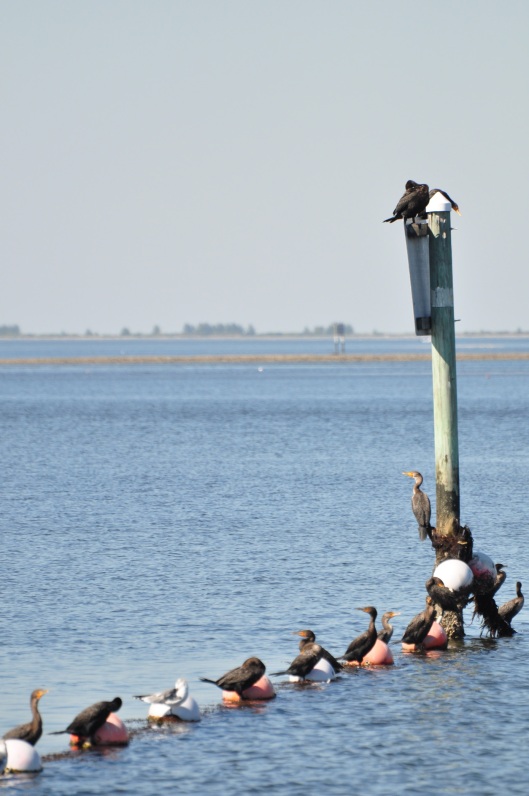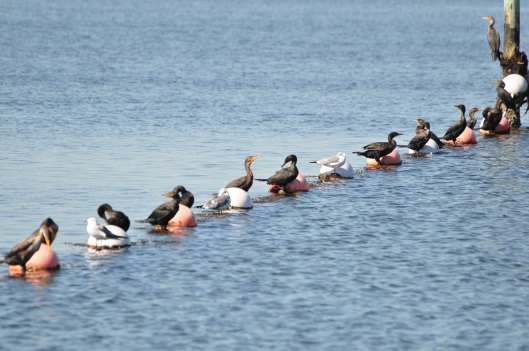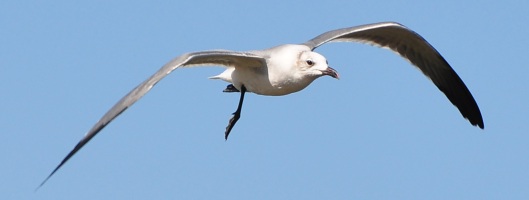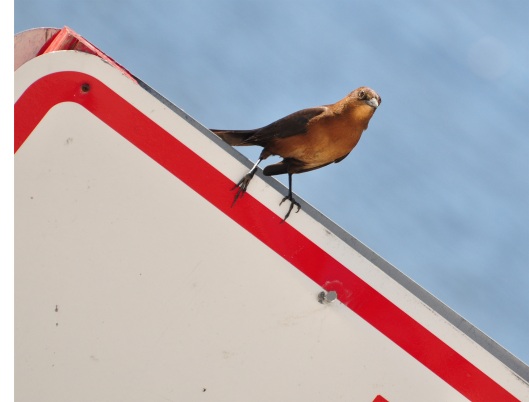
I hadn’t been on Facebook but a couple of weeks when I sent a friend request to someone named Charles Ray Martin. Mr Martin appeared with some frequency on the lists of people I’d already befriended; other than this I knew nothing except for feeling a bit alarmed by a shirtless profile pic Mr. Martin posted on his page sometime last spring. I never bothered to blow the picture up to see exactly what is was that Mr. Martin was doing, but there was something about this picture that brought to mind the very thin line between a madman and a genius. I thought perhaps Mr. Martin did things with paint and barbecue grills after midnight that would appall those of us whose evening cocktail now caused them to pass out before 8 PM.
I learned more about Mr. Martin (he was, it turns out, both an academic and an artist) and Mr. Martin’s band The Righteous Kind without an actual introduction to either. And then I met Mr. Martin at a studio listening of his “Wild Hibiscus” album, an event at which Mr. Martin was so gentlemanly and welcoming that it made you want to bang the heads of ignoramus musicians together until they cracked and spilled out good marketing plans along with good tunes.
By the time of this listening party, I’d already realized that Mr. Martin was a marketing guru, a relentless self-promoter who managed to boost his own product without pissing you off. This is very, very difficult to do. Most people fail at it. Many refuse to even try it, since this occupation is known to make a horse’s ass out of many. I’d get these little reminders that Mr. Martin’s band had a gig somewhere or another–at one of the three places in Gainesville that either 1. is safe for middle-aged musicians to play and 2. still permits live music to be played, and then I’d not go because I was holed up somewhere with the boyfriend. But Mr. Martin intrigued me with his self-promotion at the same time other bands sledgehammered my head off with it. Clearly, Mr. Martin was someone to meet.
At the listening party, Mr. Martin handed out a collection of materials in support of the new “Wild Hibiscus” CD. These included lyric sheets (upon which Mr. Martin suggested you take or make notes, if warranted) and copies of the cover and back cover artwork of the CD and the liner notes.
Now, these liner notes were obviously a hash of something that existed–and was trapped–in Mr. Martin’s head. He wrote of a trip up a river where he saw the wild hibiscus of the CD’s name, and he spoke of how the CD was a travelogue, sort of. Or was…it wasn’t clear. I sat in the overly warm studio with a plastic cup of warmish champagne and wrote a note to myself that the little story about the road trip with Mr. Martin’s wife Amy Lynn did not carry through to the songs on the CD. In other words, if you listened to the CD without having been exposed to the narrative, you wouldn’t know that there was supposed to be a story. I was glad about that, because rock-narrative albums can be irritating unless they are “Tommy” or “Quadrophenia” and even Pete Townshend could overcook an idea.
Removing the story from the songs (meaning I didn’t bother to try to force a connection or to visualize whatever it was Martin and his wife were doing on that boat on the Apalachicola River) caused me to immediately isolate “Truth Is a River” as the song most likely to succeed if there were a single to be picked like a wild hibiscus flower from this collection of Martin’s road trip and roadside recollections. And when I say Mr. Martin, I mean Mr. Martin; he is the brand if not the band. The CD says it’s all about the beauteous Amy, but it’s really all about Mr. Martin himself, a product of science, hard work, genius, and, as Mr. Martin later told me, practice. Mr. Martin happily makes reference to an era of rock music many of us sadly lament and doesn’t make any attempt to cover his tracks; no, he celebrates them, just check out that back cover photograph of The Righteous Kind crossing an Abbey Road of a stream with Mr. Martin, dressed in messianic white, leading the way. Following are his organ player, his bass player, and his drummer. The front cover is an homage to the Beach Boys’ “Wild Honey” cross-pollinated with “Endless Summer.” These are happy rips and nothing that Mr. Martin lays claim to as strictly original thought, something that–ahem–happens all the time elsewhere.
“Truth Is a River” is a song, Mr. Martin says, that was conceived during a mushroom trip during which Mr. Martin and his wife were each taking showers, one hot and one cold, and Mr. Martin suddenly had this song fragment in his head: Truth is a river/The river’s called Love/and it flows to forgiveness. So it doesn’t rhyme and the meter is clunky. Imagine what would happen in lesser hands. Something would have to rhyme with “river” and a hackneyed mess would ensue: giver, shiver, flivver, liver. Instead, it turns out that the lyrics, while nice, are not the strong suit here. It’s a nice idea, this circle of forgiveness (“Float to forgiveness and you’ll find truth/In that river called Love, say it again/Float to forgiveness/and you’ll find TRU-U-UTH” (three syllables) ), but what really makes you want you raise your arms in hosanna is the melody. Mr. Martin writes one hell of a catchy tune that is aided and abetted immeasurably by a pulpy, creamy retro organ and damn fine synth break that leans ever so slightly to the Moog-classical. If this song doesn’t make you smile, there’s something wrong with you. Mr. Martin is a greatly impassioned if not a great singer, and I’m only putting that out there because someone is bound to say that I’ve omitted something about vocals: Who cares?
Something that annoys me about music is that songwriters have lost a good deal of ability to keep things concise. Choruses repeated and repeated again, songs dragging out to nearly the six-minute mark when the point was made at minute two, and so forth. Mr. Martin writes a tight number that does what it was intended to do and no more. He isn’t afraid to end a song.
“Wild Hibiscus” contains 11 tracks and 10 songs. Most of the songs are about Mr. Martin’s wife, which sounds kind of nauseating until you listen to them and realize that the ideas (“my heart’s been purloined”–yes, he did say “purloined”) aren’t sledgehammered into your brain. “Song About Amy” could be awkward if it weren’t for the simplicity of lyric and the catchiness of the musical motif; this song bubbles along like club soda with a bright red cherry stuck on a spear right in the middle of it and Mr. Martin’s voice seems endearing and drags you right in until the song abruptly stops and leads to the next track, the fabulous Tom Miller-penned “Automobile,” which is killing me because I can’t remember where a two-note motif originated in the bowels of 1970s metal. Or 1980s New Wave–perhaps a mixture of these two. Miller, the bassist, sings this one and it is the only time someone else takes center stage–if not the spotlight–from Mr. Martin.
We’re right back to the Amy theme park again with “You Are Beautiful,” which has nifty references to both Mt. Rainier and the Salton Sea. “YAB” is a ballad that has wisps of that era of British rock that gave us “Satanic Majesties” and other musical mysticisms. Oh You! Mr. Martin sings, You are beautiful. The entire CD is an ode, a paean, a testament to Amy, and it is heartwarming really, in this day and age of domestic violence. That it makes one come to this conclusion at all may seem odd until you meet Mr. Martin and understand that he is an intense person and probably a recondite and flawed romantic.
I dug in a way that I haven’t dug since 1971 the music of “Something Blowin’ In,” even as it isn’t lyrically clear what that something might be; this is Florida and Martin is being literal–hurricane, tornado, straight-line wind? There’s a vocal run reminiscent of a Blondie song in the middle- a vocalization that more or less follows a line in “Call Me.” The CD is full of these almost-rips, including at the end of “Blowin'” another vocalization that brings to mind Jim Morrison’s free-for-all on “LA Woman.” Finding and correctly identifying these brief references is a lot of fun and is something that might keep you occupied for hours or might form the basis of a new party game for those who no longer go out and who spend hours listening to their old vinyl collection.
I have written this many words without much crediting The Righteous Kind, the band, for their efforts. This is a terrible oversight, but consider it a by-product of Mr. Martin’s Course in the Powers of Persuasion. There is a band behind Mr. Martin and a fine band it is, too, with classic rock organ by Mr. Brashear, funked-up bass by Mr. Miller and drums, ladies and gentleman, by the elusive Larry California.
This CD sounds terrible played on my computer, where there is no low end. It actually has a great production, courtesy of Bob McPeek, and deserves–dare I say it–an issue on vinyl, where you can get into the groove of something like “Peace Bud,” a song that is a near-perfect blues number (point off for mentioning Palatka; I resist any geographic references other than Big Cities).
Mr. Martin does a good job of giving the impression that he is perpetually on the prowl for something. I don’t think I–or you or anyone else–should attempt to psychoanalyze this CD; it fares best without delving too deep into either the trip narrative or the Amy aspect. The revival preacher angle, though, is grand, and it begs to be taken immediately to video. There’s something about Mr. Martin’s luxurious S-wave of hair, the nerdy-prof glasses, the Absolute Assuredness With Which This CD Has Been Conceived that makes me want to package and sell Charles Ray Martin dolls dressed in white and with big goofy grins on their genius plastic faces–it’s very persuasive stuff, kiddies. If Mr. Martin offers you any neon-colored Kool-Aid, drink it.
www.therighteouskind.com
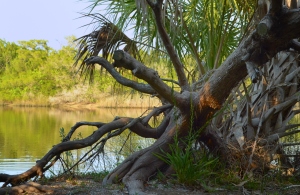 What I think of as Florida’s “condo conga line” starts at Ormond Beach and snakes southward to Miami, where it ends in a riot of tropical colors suggestive of sun and water. Above Ormond Beach, the line is disrupted here and there by a large estuarine research facility, the ugly, low-slung condo bunkers at Flagler Beach and by St. Augustine. Jacksonville to Ormond on the A1A isn’t the prettiest drive in Florida, nor does it contain the type of seaside restaurant I am always looking for and failing to find. This stretch of the A1A suffers a bit, I think, from not being what people envision as “Florida.” There’s not a lot of aquamarine and coral used in housepainting palettes and there isn’t a lawn flamingo in sight. It’s windy and often damp. If you keep on the A1A you will be at risk of yawning your way south, not to perk up visually or intellectually until the chesty condo towers of Palm Beach make you question the enormous gap between the haves and the have-nots and how it got so damn big.
What I think of as Florida’s “condo conga line” starts at Ormond Beach and snakes southward to Miami, where it ends in a riot of tropical colors suggestive of sun and water. Above Ormond Beach, the line is disrupted here and there by a large estuarine research facility, the ugly, low-slung condo bunkers at Flagler Beach and by St. Augustine. Jacksonville to Ormond on the A1A isn’t the prettiest drive in Florida, nor does it contain the type of seaside restaurant I am always looking for and failing to find. This stretch of the A1A suffers a bit, I think, from not being what people envision as “Florida.” There’s not a lot of aquamarine and coral used in housepainting palettes and there isn’t a lawn flamingo in sight. It’s windy and often damp. If you keep on the A1A you will be at risk of yawning your way south, not to perk up visually or intellectually until the chesty condo towers of Palm Beach make you question the enormous gap between the haves and the have-nots and how it got so damn big.

